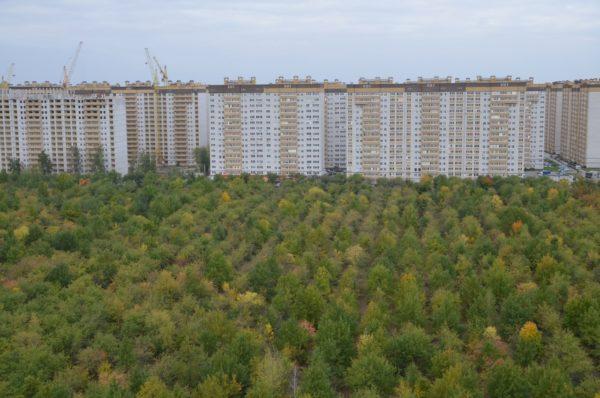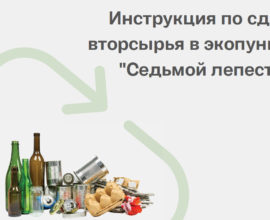What is the best use of trees to help us meet our emission targets?
What is the best use of trees to help us meet our emission targets? // Как лучше всего использовать деревья, чтобы помочь нам достичь минимальных показателей выбросов CO2?

[00:00]
So what is the best use of trees to help us meet our emission targets? Well, let’s go back to the tree top Trumps of election time. To lock up carbon you want a tree for the large trunk and dense wood. A pine is often seen as the best because they grow fast. You can pack them together. So I might raise you a hectare, a fast growing Sitka spruce, which would gobble up 200 tons of carbon in its lifetime – game over? Not quite
[00:27]
We did actually perform research that showed that natural regeneration of native woodlands on balance is actually a lot more effective as a climate mitigation strategy than using plantations. And one of the main reasons for this was despite the plantations often having a faster carbon sequestration rate than native woodlands, is this issue of the permanence of the carbon stocks. So how long they’re actually on the landscape for. And also because you have to factor in the carbon stocks that are on land prior to planting the trees, we may be planting in sort of degraded or disturbed forest habitats that need to be cleared.
[01:08]
These are actually areas that we really should be focusing on for restoration. You know, these are disturbed forests which are far more resilient because they already have species there. And if we leave them to regenerate, naturally, they’re going to be able to retain very high carbon stocks. But if we decide that actually these disturbed forests have no value and we want to clear them and put a timber plantation and that could lead to large emissions rather than actually any net benefit.
[01:34]
Charlotte’s research suggests that 45 percent of global commitments to tree planting are actually for short lived timber plantations. She believes we need more emphasis on natural regeneration and protecting the woodlands we already have because the carbon in these ecosystems will remain locked up and because their natural diversity means they’ll be much more resilient in the face of changing climate.
[02:00]
One important factor we have to think about is diversity in monoculture plantations in the UK. They can be very susceptible to disease. So things like ash dieback which have come into the UK are really important to consider when you’re looking at tree planting. But there were also pine related pest species that we need to really carefully monitor. We also need to look at genetic diversity in a plantation where you have planting a single species, not only probably planting just a single species of tree, but you may only be planting individuals from a limited number of parent trees.
[02:36]
So we need to be very, very careful about making sure we maintain genetic diversity within monoculture plantations as well, because that will make them more resilient to pests and to issues related to climate and changing climate in the future.
[02:50]
You’re listening to Cost in the Earth with Peter Gibbs, where I’m trying to find out whether ambitious tree planting schemes can really help us solve the climate crisis. Well, my local woodland here on the side of the Thames Valley is believed to be a remnant of the original Wildwood that covered Britain after the last ice age. But there are signs of stress here. I can see a lot of the ash around about is suffering from die-back disease, and also these hotter, drier summers that we’re seeing are really quite bad news for the shallow rooted beech trees.
[03:23]
Well, this is the forest of the past and present. But over in Sweden, Dr Henrik Shelman, scientific curator at the Guttenberg Botanical Garden, is standing in his Forest of the future, where he’s growing trees from different parts of the world to discover which might be most resilient to our future northern European climate.
[03:44] – Dr Henrik Shelman
The figures we can look into the crystal ball, a little bit, to see what kind of diseases are passed, do we have in the pipeline. The main thing is to invest in diversity, because if we have a big diversity and a disease common here, it’s all ashes or all alms that we have seen we still doesn’t lose that many trees. There’s still a lot of trees standing there and could cope. So what we need to do is broaden our catalogue of species to use.
[04:12]
Some of the popularity i think around this idea of planting trees to lock up carbon is, well, you know, a place like this that I’m standing in now, it’s a wonderful place to be. It’s very calming. But that means perhaps quite an emphasis on native trees. So like the oaks, like the beach, which might actually not be the best trees to be planting now when you’re thinking about 50, 100 years in the future.
[04:37] – Dr Henrik Shelman
That’s the big challenge when we talk about native trees and so on, that we might not be able to grow the native genetic matches of the species in future. We might have to work with a southern France or even East European or even Caucasus in Georgia. That kind of genetic material of the same species is maybe better adapted for future climate and so on. That’s the challenge, that’s the chance that the attitude towards that if we kind of create some kind of resilience, non-native, it’s the way to go, actually.
[05:11]
Although Henrich believes we need to look much further afield for the genetic material we use to make sure the trees don’t bring disease with them. We need to be growing them locally from seed.
[05:21] – Dr Henrik Shelman
I think the future is that we need to have more locally produced plants from the seed, from the cuttings, from the grafting that have to be on site in the area because there are fewer Nassiri they actually grow plant. It’s more like buying and selling. This is the biggest challenge we have when it comes to spreading diseases and pests because they are hitchhikers, not the plants fault that’s shipping. So I think the future is to have locally produced. But it’s also a challenge for, for example, the nursery in the UK because they have to change dramatically.
[05:56]
We heard from nurserymen Jamie Hurst at the start of the program. His nursery produces more than 13 million plants annually, but he feels they’re going to need a lot more support to meet the demand of these tree planting promises.
[06:10] – Jamie Hurst
We can’t step up to the mark. There is not enough seed at the moment, but the seed collectors aren’t going to step up to the mark. The whole supply chain, until we have certainty that these levels are going to be achieved. To get to these levels, we need major commercial forestry plantings to go on and to enable that, we need fiscal support to come in. Main nurseries who supply the forest industry already operating at 95 per cent capacity. We need investment in everything from infrastructure, land, people. Without people we can’t operate.
[06:48] – Jamie Hurst
We’re talking about capital here that is going to be required just at the time. We’re all taking a hit over with covid. If we’re going to achieve that sort of growth, we need significant fiscal support and we need it now to be able to deliver for 2025.
[07:07]
So it’s a big challenge to produce enough saplings here to meet targets, but then imports, risk bringing in devastating disease. So can we let nature do some of the hard work for us, instead? The perfectly named Isabella Tree is the best selling author of Wilding and Britton’s guru of rewilding. She firmly believes there is another way.
[07:30] – Isabella Tree
There’s a very engaging and sort of almost magnetic pull towards spades in the ground, but I don’t think it’s really the way to go about it. What we’ve seen at nap in our rewilding project is the tremendous benefits to biodiversity of allowing natural regeneration. So it’s really allowing thorny scrub, which is a kind of habitat that we have zero tolerance for in our landscapes. And we’ve almost forgotten about it. But it is actually the nursery for growing trees. And we knew this very well in the Middle Ages. There’s a lovely old foresters quote, which is “The Thorn is the mother of the oak”. And I think we lose something very important if we forget that natural regeneration is actually the most natural way of producing trees.
[08:22]
It’s also very low carbon. So if you think of the process of actually planting a tree that we’re familiar with today, which is putting saplings in the ground, which are produced in commercial nurseries, sometimes from abroad, often in Holland, you could be importing disease. That plant, that whip, the sapling itself is not connected to all the mycorrhizal fungi, that underground web of root fibre connections that give it that support from the moment it germinates. So you’re not producing saplings from the get go that are actually as strong and resilient as they could be.
[09:04]
And then you have a very high percentage loss. And what you get at the end of the day is a single generational plantation that eventually becomes closed canopy woodland, which is very species poor, very undynamic. That open wood pasture landscape with the thorny scrub is where you get the incredible biodiversity.
[09:25]
Paradoxically, promises made in the recent budget to plant woodlands the size of Birmingham might actually have less to offer than leaving smaller areas to naturally rewild into something much less densely canopied.




